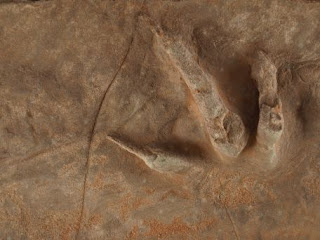
Evidences from Paleontology
Paleontology is the study of past life based on fossil and fossilization record. The fossils are the petrified remains or impressions or imprints of the hard parts of the ancient organisms. They are preserved in the sedimentary rocks (gradual deposition of soil particles in layer after layer) or other media like volcanic ash, ice, sand, mud, etc. to study about evidences from Paleontology. Examples: Archaeopteryx left bones and feathers in the form of impression.
Note:
Dinosaurs left foot print on the hard rocks called Imprints.
Leonardo da Vinci (1452-1519) is called father of Paleontology.
Georges Cuvier (1800) is called father of modern Paleontology.
Paleozoology is the branch of Paleontology which deals about the study of animal fossils.
Four general types of Fossils
They are Unaltered, Petrified, Moulds and Casts and Prints
Unaltered
Whole bodies of extinct organisms have been found frozen in ice at the poles (fossilized resin of confers). Example: Elephant like Wooly mammoths were found buried in ice in
Petrified
According to evidences from Paleontology the fossil includes the hard parts of extinct organisms such as bones, shell, teeth, etc. Sometimes these hard parts are found unchanged but mostly they are found with their organic parts or completely replaced by deposition by minerals. Replacement of organic parts by minerals deposition is called petrification.
Moulds and Casts
Evidences from Paleontology suggests that moulds of hardened and fossilized mud that surrounds an extinct organisms have retained true copies of their shapes. During moulding buried organisms are completely replaced by minerals.
Prints
It includes print of print of foot, wings, bone, skin, etc. in soft mud.
Evidences from Comparative Cytology
According to evidences from comparative cytology all forms of life come fro m cellular level. The cell is structural and functional unit of life. This indicates basic relationship among living forms. All cells contain cell membrane made up of double layered lipo proteins. They have DNA - RNA protein information and communication system. All the cells utilize the glycolytic pathway and have a Krebs cycle and an electron transport system as pointed by the evidences from comparative cytology.
m cellular level. The cell is structural and functional unit of life. This indicates basic relationship among living forms. All cells contain cell membrane made up of double layered lipo proteins. They have DNA - RNA protein information and communication system. All the cells utilize the glycolytic pathway and have a Krebs cycle and an electron transport system as pointed by the evidences from comparative cytology.


0 comments:
Post a Comment